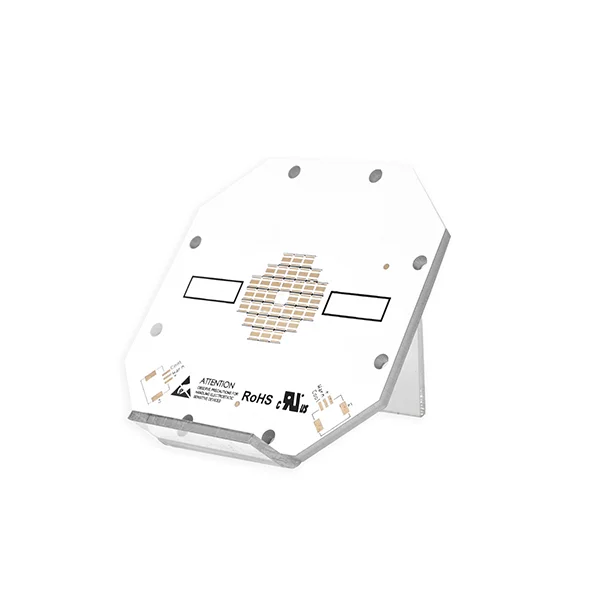How Does the MCPCB Affect Performance of Audio Equipment?
- Views
- 01 Feb 2024
Metal Core Printed Circuit Boards (MCPCBs) play a crucial role in shaping the performance of audio equipment. These specialized circuit boards offer unique characteristics that directly impact the quality of audio reproduction and the overall listening experience.

In a word, manufacturers and designers must carefully consider the characteristics of MCPCBs to ensure the highest standards of audio quality and reliability in their products. If you are finding a vendor of MCPCB, please trust us, we can believe Best Technology can be your best partner.
MCPCB performance, led light pcb design, metal core pcb design,
1. Vibration Damping and Resonance Control
MCPCBs with excellent vibration damping properties help mitigate the effects of mechanical vibrations within audio equipment. By reducing vibrations, MCPCBs minimize unwanted noise and distortion, allowing for clearer and more faithful audio playback. Moreover, MCPCBs with optimal mass and stiffness properties effectively control resonance, preventing sound coloration and maintaining the accuracy of audio reproduction.2. Electromagnetic Interference Shielding
One of the critical functions of MCPCBs is providing effective shielding against electromagnetic interference. EMI can introduce noise into audio circuits, degrading the quality of the audio signal. MCPCBs with proper shielding capabilities safeguard against EMI, ensuring that the audio signal remains pristine and free from interference.3. Grounding and Signal Integrity
MCPCBs contribute to maintaining robust grounding and signal integrity within audio equipment. With well-designed ground planes and signal traces, MCPCBs establish clean reference potentials for audio signals, minimizing noise and maintaining high fidelity throughout the audio chain. A stable grounding system facilitated by MCPCBs reduces hum and other disturbances, enhancing the clarity and purity of the audio output.
4. Heat Dissipation
Efficient heat dissipation is vital for the reliable operation of audio components. MCPCBs with high thermal conductivity help dissipate heat generated by audio circuitry, preventing thermal-induced distortions and ensuring stable performance over extended periods. By effectively managing heat, MCPCBs contribute to the longevity and reliability of audio equipment.5. Structural Stability
MCPCBs provide a stable structural foundation for audio components and circuitry. Their robust construction minimizes mechanical vibrations and instability, further enhancing the overall performance and longevity of audio equipment. By maintaining structural integrity, MCPCBs contribute to consistent audio quality and reliability.5 FAQs about Metal Core PCB in Audio Equipment
1. How do MCPCBs improve audio quality?
MCPCBs help in reducing vibration and resonance, shielding against EMI, maintaining clean grounding, dissipating heat efficiently, and providing structural stability, all of which contribute to improved audio quality.2. Are MCPCBs essential for all audio equipment?
While not essential for all audio equipment, MCPCBs are highly beneficial, especially in high-fidelity audio systems where quality and reliability are paramount.3. Can MCPCBs be customized for specific audio applications?
Yes, MCPCBs can be customized to meet the requirements of specific audio applications, allowing for optimized performance tailored to different audio equipment designs.4. Do MCPCBs require special handling during installation?
MCPCBs should be handled with care during installation to prevent damage to sensitive components and ensure proper grounding and heat dissipation within the audio equipment.5. How do I choose the right MCPCB for my audio project?
When selecting an MCPCB for your audio project, consider factors such as vibration damping capabilities, EMI shielding effectiveness, thermal conductivity, and overall structural integrity to match the specific requirements of your audio system.In a word, manufacturers and designers must carefully consider the characteristics of MCPCBs to ensure the highest standards of audio quality and reliability in their products. If you are finding a vendor of MCPCB, please trust us, we can believe Best Technology can be your best partner.
MCPCB performance, led light pcb design, metal core pcb design,
Related Blog
- What is Thermal and Electrical Separating Pad in Metal Core PCB?
- LED PCB Assembly Process: Step-by-Step Guide for Beginners
- Why Always Recommend White Solder Mask Black Silkscreen for Aluminum PCB?
- What Materials Are Commonly Used for Manufacturing Lighting PCBs?
- Everything You Should Know About Metal Core Circuit Board
- What Are the Differences Between Ceramic PCB, Metal Core PCB And Standard FR4 PCB?
- Why Choose Best Technology As Your MCPCB Manufacturer?
- What is LED Light Circuit Board and How to Make it?
- When is International Labour Day in 2024 and What are the Significances of It?
- How Does A Convexity Comes Out On Thermoelectric Separation Copper Based PCB?
- Why is Aluminum LED PCB Important for Indoor Growth Lights?
- Application of Metal Core Pcbs in the Development of LED Technology
- Why Choose White Solder Mask for Metal core PCB When Used In LED Devices?
- Understanding Aluminum LED PCBs in 1000w LED Grow Lights
- What Are the Advantages of Metal Core PCB? How to Choose?
- Automotive Light Copper Core Pcb Production Process—testing
- Why Are Metal Core PCBs, Especially Copper Core, Used In Heat-Sensitive Electronics?
- How do aluminum LED PCBs improve LED efficiency?
- What Are the Differences Between Regular and Thermoelectric Separation Copper-Base PCBs?
- Aluminum PCB VS FR-4 Performance Comparison



